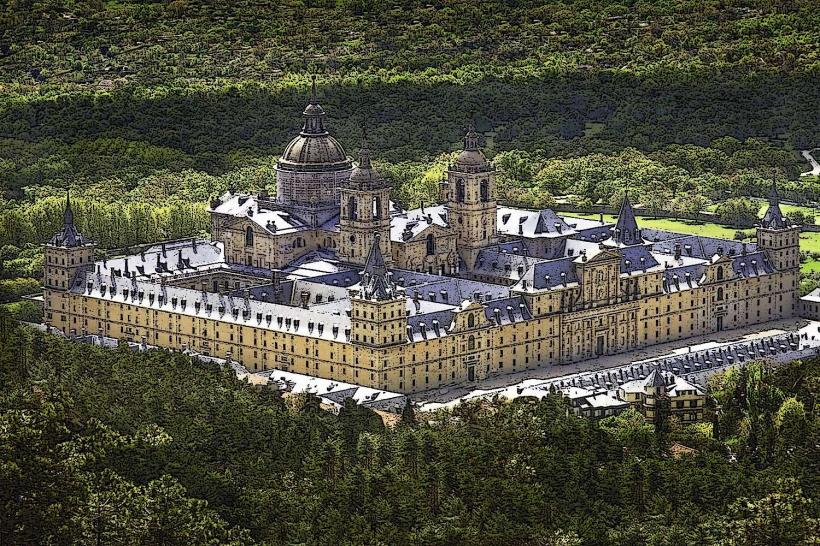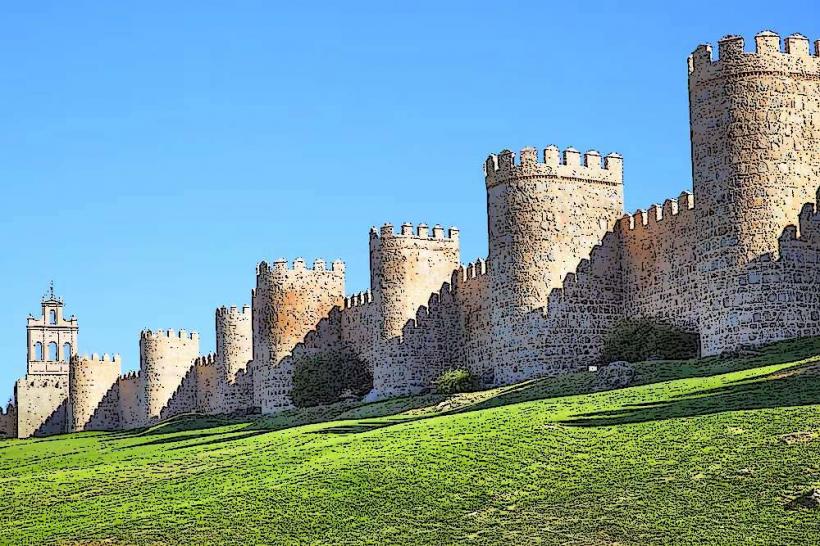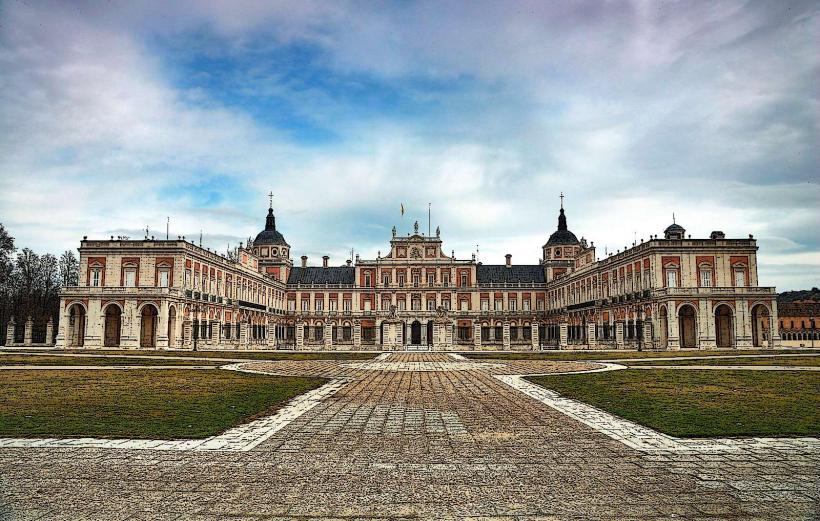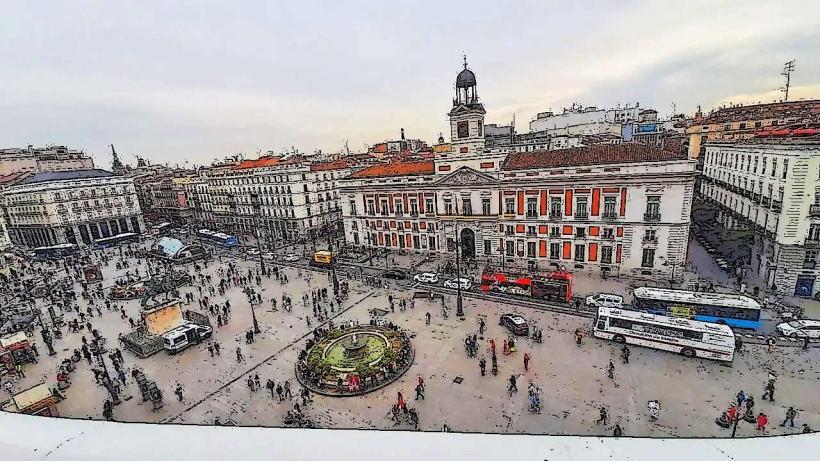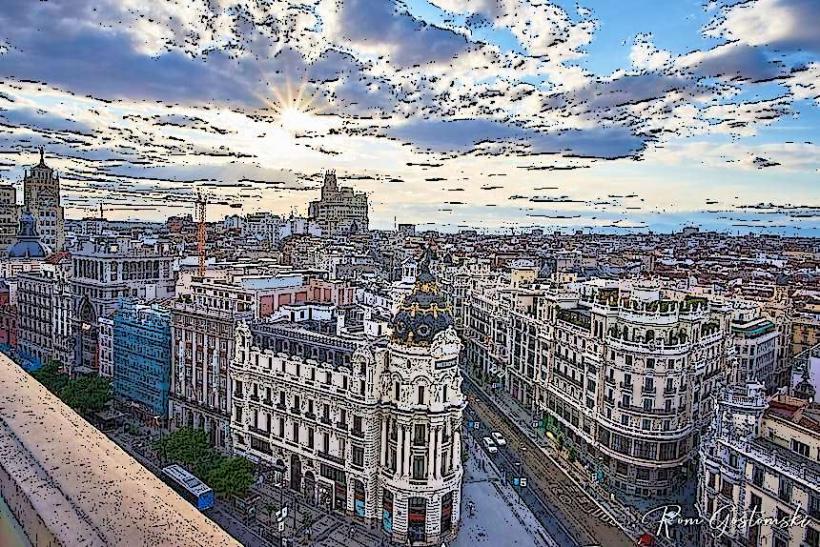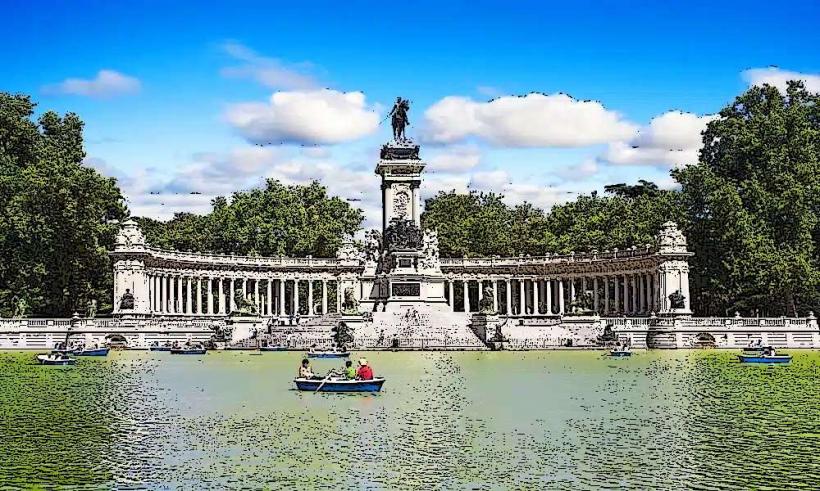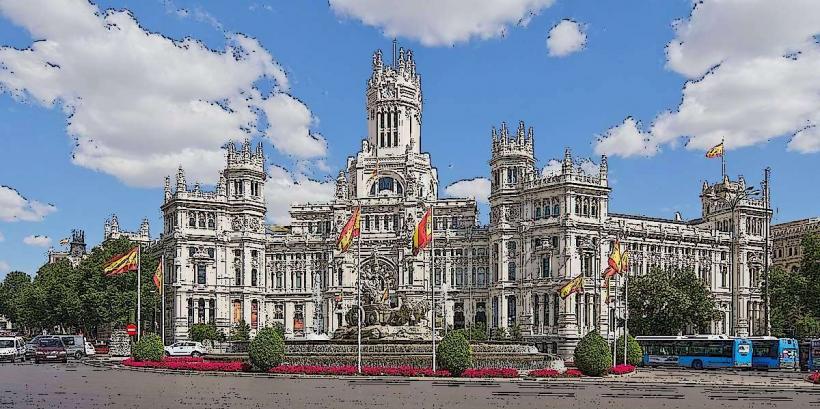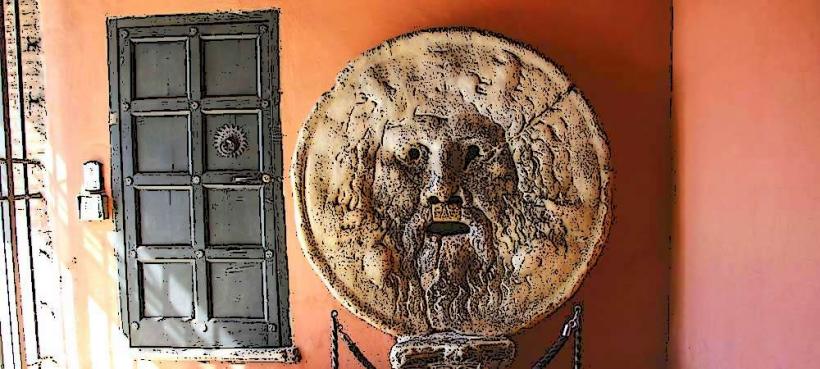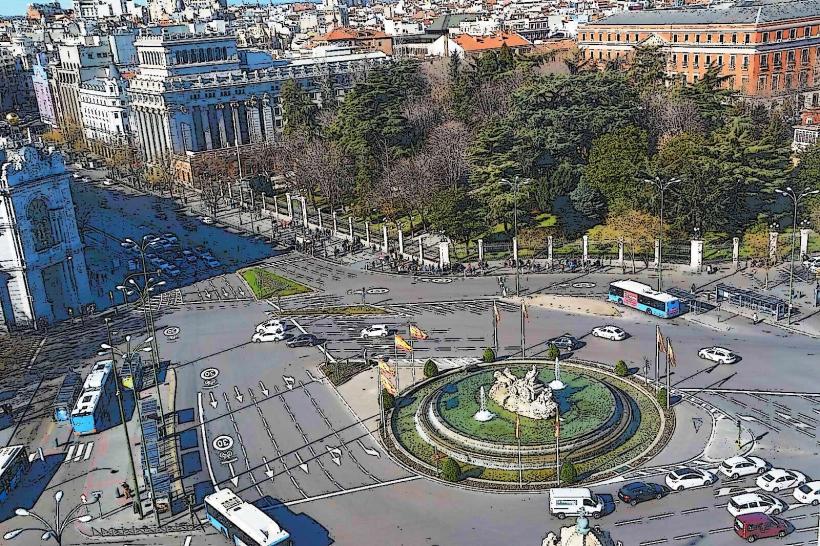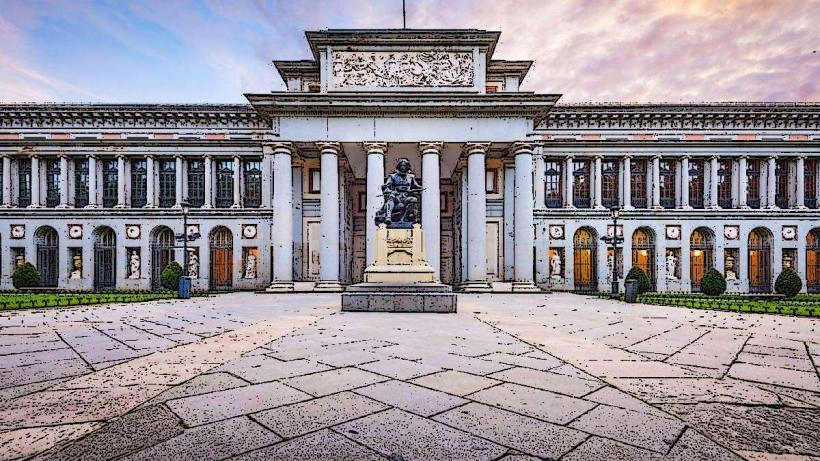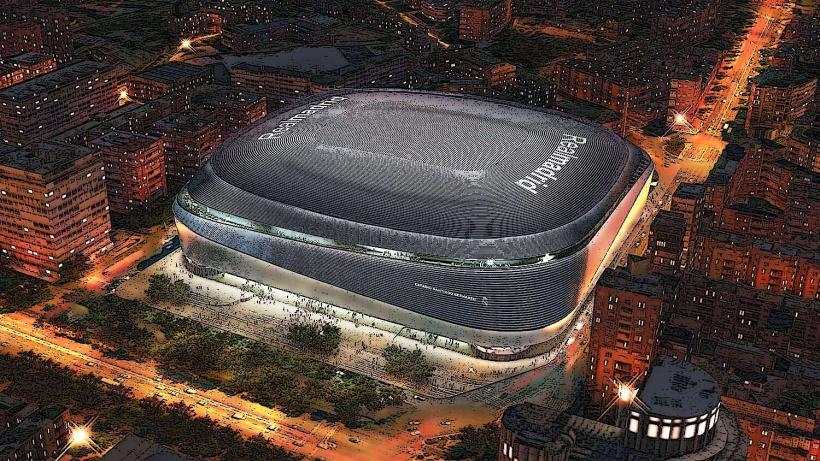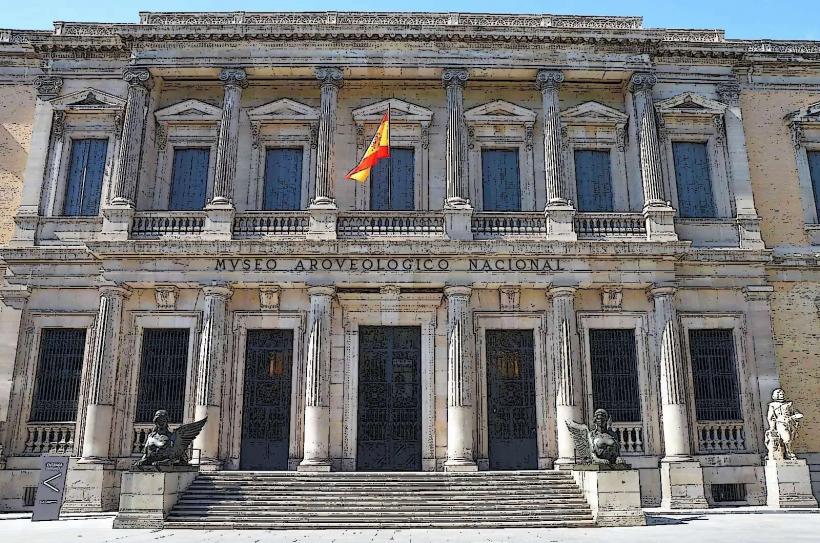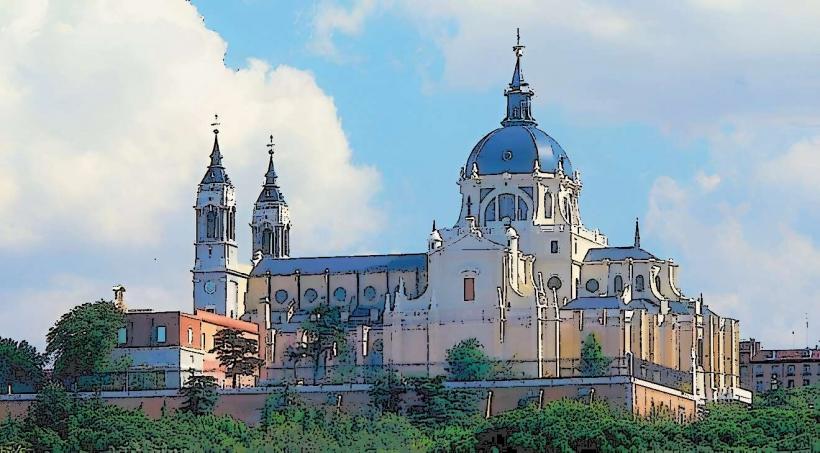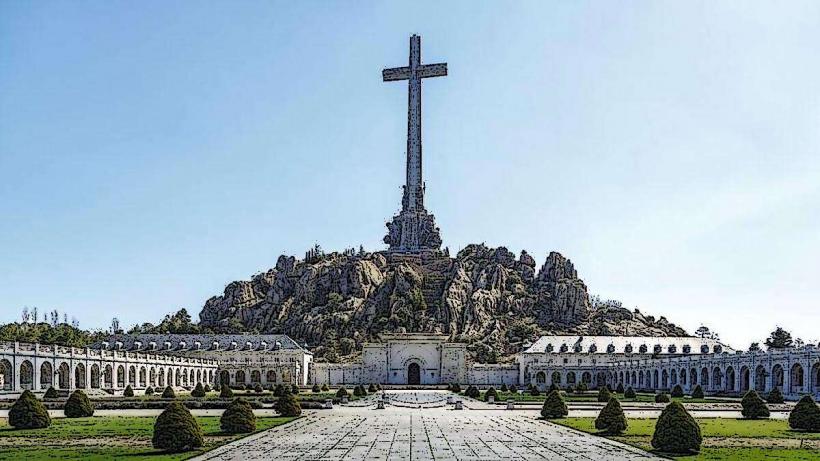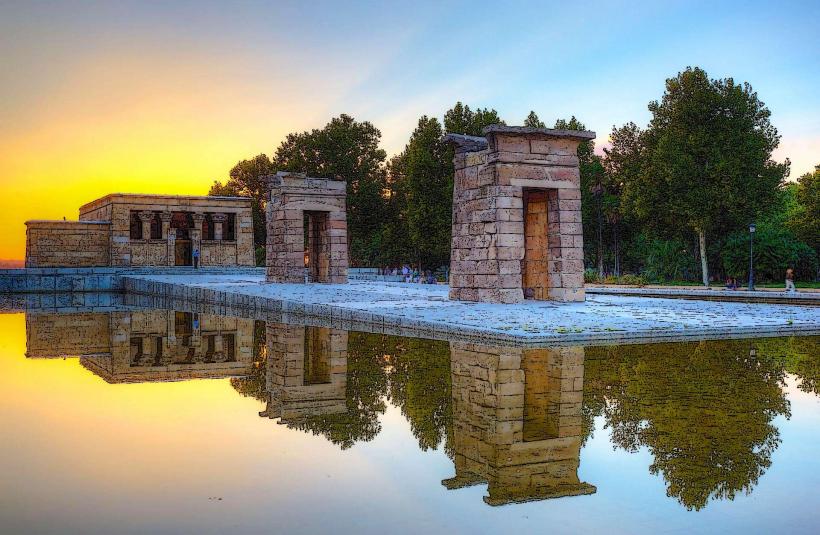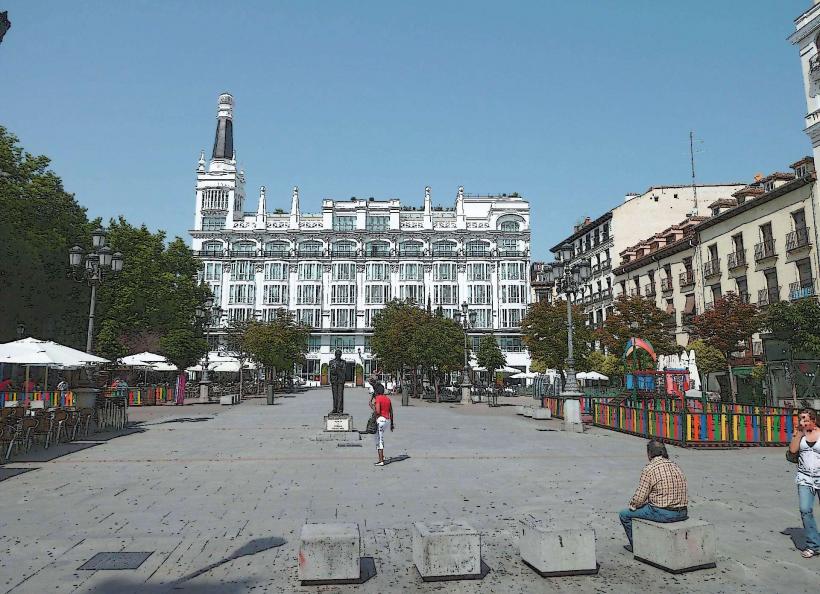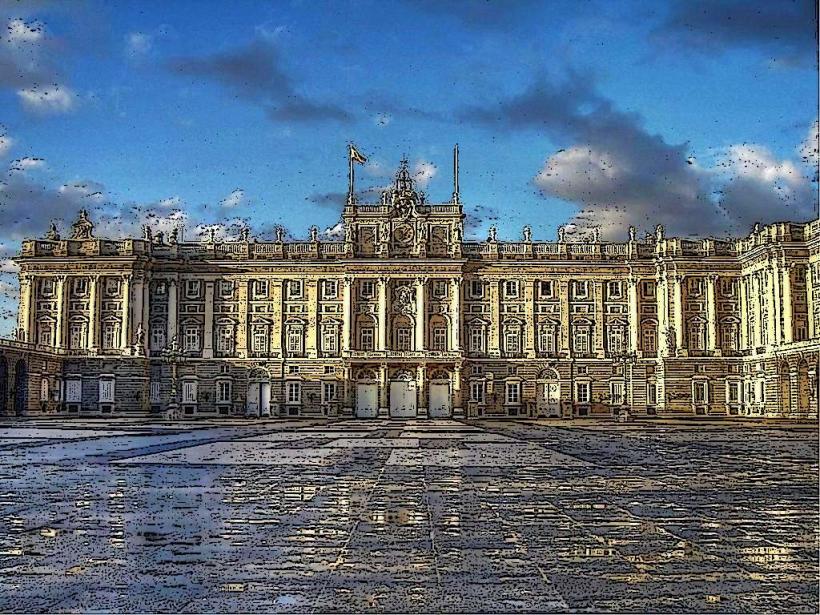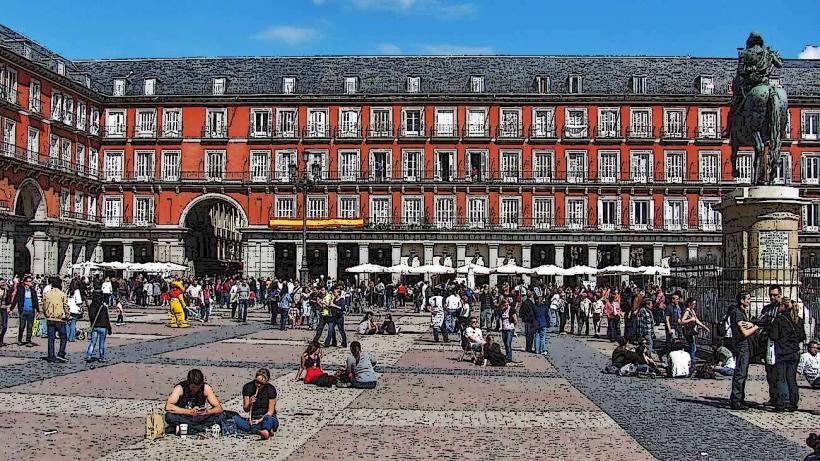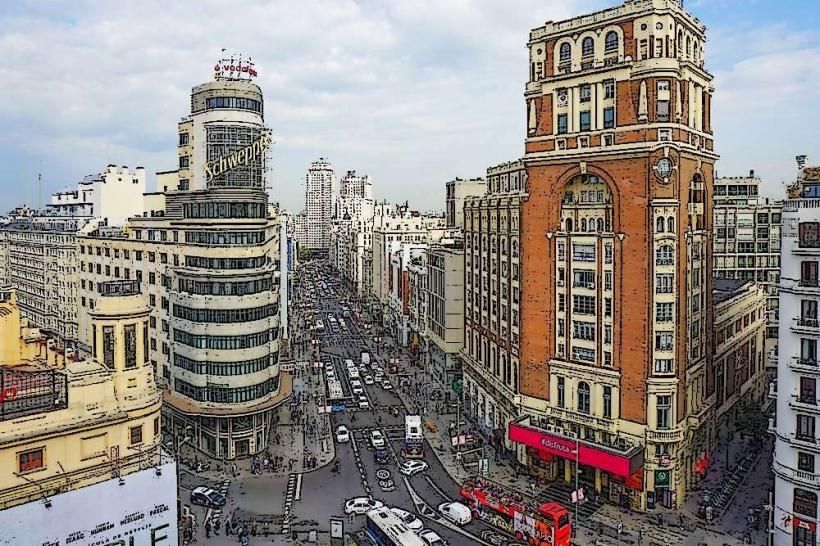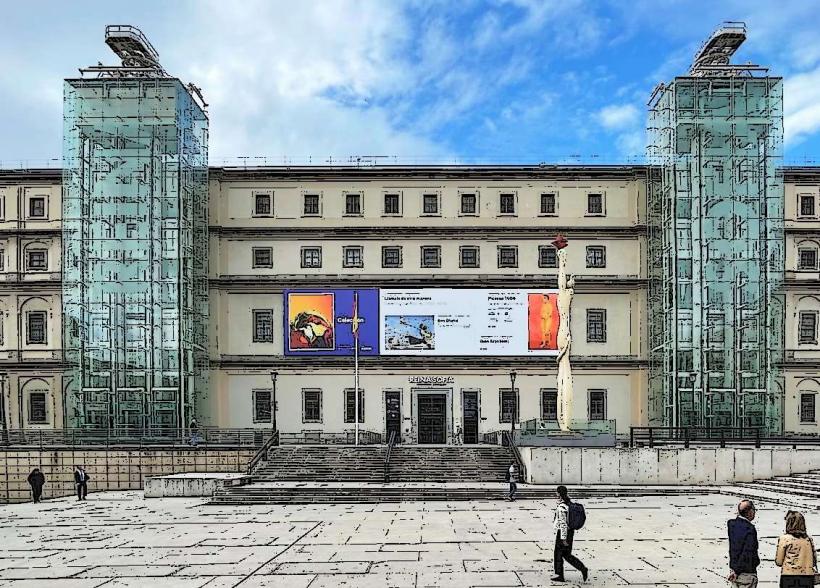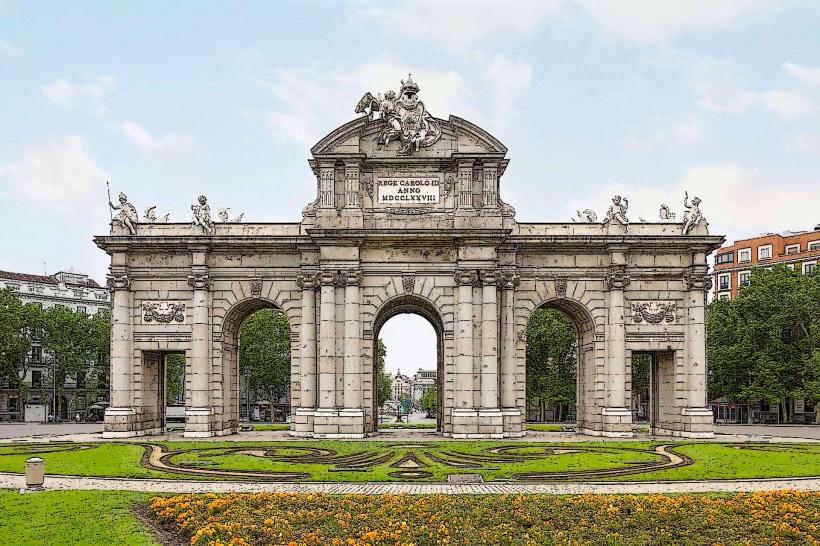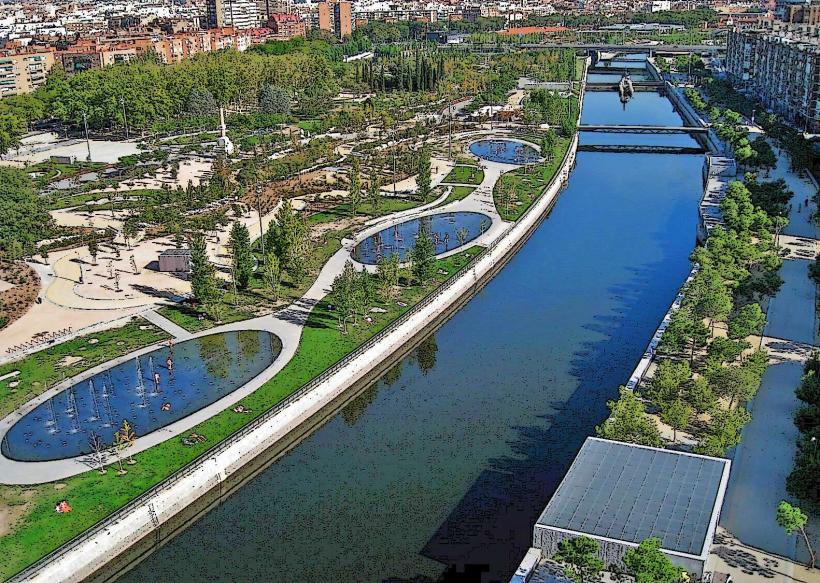Information
Landmark: Cibeles FountainCity: Madrid
Country: Spain
Continent: Europe
The Cibeles Fountain (Fuente de Cibeles) is one of the most iconic landmarks in Madrid, Spain, and a symbol of the city’s rich history and heritage. Located in the Plaza de Cibeles, it is a stunning example of neoclassical art and architecture. The fountain is not only an important monument but also a cultural and social symbol for the people of Madrid.
Key Features of the Cibeles Fountain:
1. History and Origins
- Construction: The Cibeles Fountain was designed by Francisco Gutiérrez and Roberto Michel, with the statue of the goddess Cibeles created by Bartolomé José de Cossío. It was completed in 1782, during the reign of King Charles III. The fountain was part of the king’s broader urban planning efforts to beautify and modernize Madrid.
- Named After the Goddess: The fountain is named after Cibeles, an ancient Phrygian goddess associated with fertility, nature, and the earth. In Greek mythology, she is often depicted as the goddess of nature and the wild, riding a chariot pulled by lions.
2. Design and Architecture
- Neoclassical Style: The fountain is a magnificent example of neoclassical design, blending classical mythology with the grandeur of 18th-century Spanish art. The central feature of the fountain is a marble statue of Cibeles herself, sitting majestically in a chariot drawn by two lions.
- The Goddess Cibeles: The goddess is depicted holding a scepter in one hand and a shield in the other, while the chariot is drawn by the lions, symbolizing her power over nature and the animal kingdom. The chariot's wheels are adorned with symbolic designs, and the overall composition is rich in classical iconography.
- Water Features: Water flows from various parts of the fountain, including the chariot and around the base of the statue. The fountain was originally designed to provide drinking water to the city, but today it serves as a decorative monument and gathering place.
3. Location and Surroundings
- Plaza de Cibeles: The fountain is located in the Plaza de Cibeles, one of Madrid’s most important squares. The square serves as a key junction between several major streets in the city and is a central point in the Madrid landscape.
- Surrounding Buildings: The fountain is surrounded by impressive buildings, including the Palacio de Cibeles (Cibeles Palace), which houses Madrid’s city hall, and the Bank of Spain building. These buildings, along with the fountain, form a striking architectural ensemble in the heart of Madrid.
- Urban Symbol: The Cibeles Fountain has become an integral part of Madrid's urban identity. It stands as a key focal point in the city’s urban planning and is central to many public events, parades, and celebrations.
4. Cultural and Social Significance
- Symbol of Madrid: The Cibeles Fountain is often considered a symbol of Madrid itself. It represents the city’s strength, resilience, and historical significance, and it is a place where locals gather to celebrate significant events.
- Celebrations: The fountain is particularly famous for its role in celebrating sports victories. When Real Madrid (the city's beloved football team) wins major trophies, thousands of fans gather around the fountain to celebrate, with players often parading on buses through the streets and stopping at Cibeles to greet the crowds.
- Political and Civic Events: Over the years, the fountain has also been the site of important political and civic events. It is often used as a gathering point for demonstrations and public celebrations, making it a symbol of unity for Madrid’s residents.
- Role in Royal Celebrations: Historically, the Cibeles Fountain has been the site of celebrations for royal events, such as royal weddings and the coronation of kings and queens. It has been an important meeting point for Madrid's citizens during moments of national importance.
5. Cibeles Fountain and Football
- The Cibeles Fountain is particularly well-known among Real Madrid football fans. The team’s fans often congregate at the fountain after the team wins major trophies, such as the Champions League or La Liga title. This tradition has made the fountain an iconic symbol of football culture in Madrid.
- Players of Real Madrid traditionally visit the fountain to celebrate with their supporters after major victories. The image of the team’s players celebrating at the fountain has become an iconic part of Madrid’s sporting heritage.
6. Visiting the Fountain
- Public Space: The Cibeles Fountain is located in a public square, making it easily accessible to visitors. It is a popular tourist attraction and an ideal spot for a photograph with one of the most recognizable landmarks in Madrid.
- Surrounding Attractions: While visiting the fountain, tourists can explore other nearby attractions, such as Gran Vía, Puerta de Alcalá, and the Retiro Park, all of which are within walking distance of Plaza de Cibeles.
7. Lighting and Nighttime Beauty
- The Cibeles Fountain is beautifully lit up at night, making it a stunning sight for those visiting Madrid after dark. The lighting highlights the beauty of the statue and the fountain's water features, creating a dramatic and romantic atmosphere in the Plaza de Cibeles.
- Special lighting is often used during holidays or events to emphasize the monument’s importance and beauty, adding to its allure as a night-time destination in the city.
Conclusion
The Cibeles Fountain is one of Madrid’s most beloved and historic monuments, offering visitors a glimpse into the city’s rich cultural and architectural heritage. It is not only a beautiful piece of art but also a central point in the city’s social and civic life. Whether you’re admiring the fountain’s neoclassical design, celebrating a football victory, or simply taking in the atmosphere of Plaza de Cibeles, this iconic landmark is an essential part of the Madrid experience.

